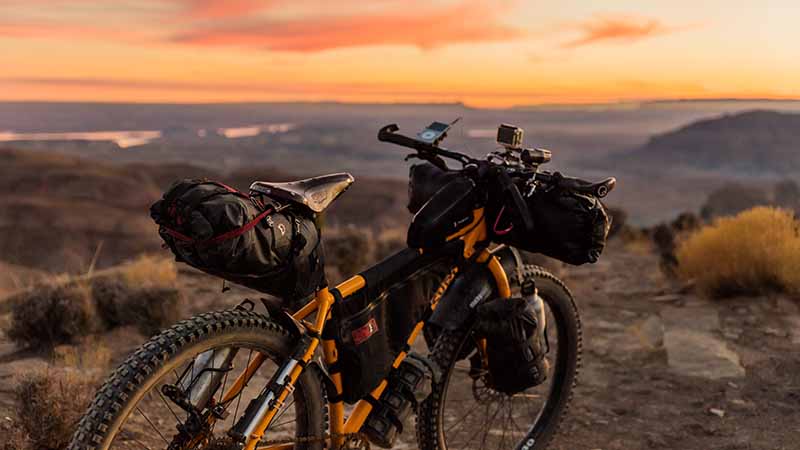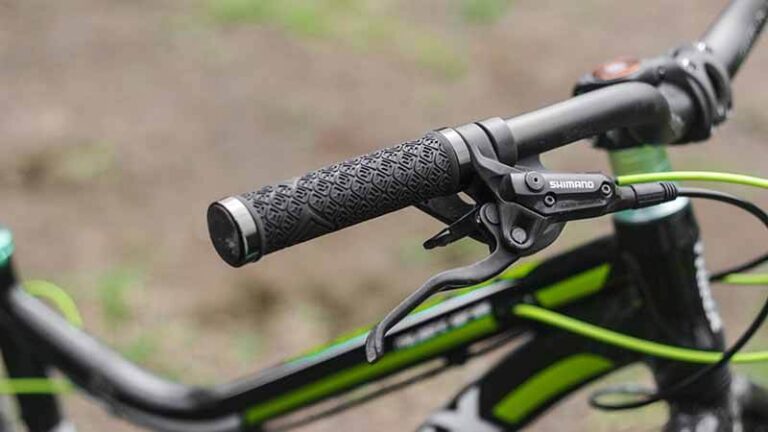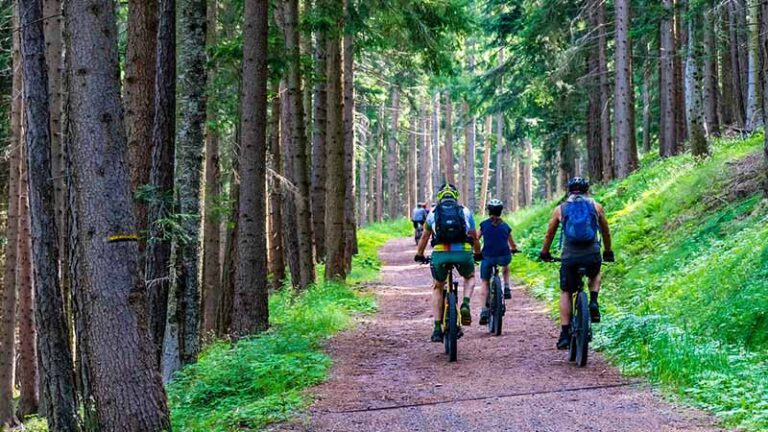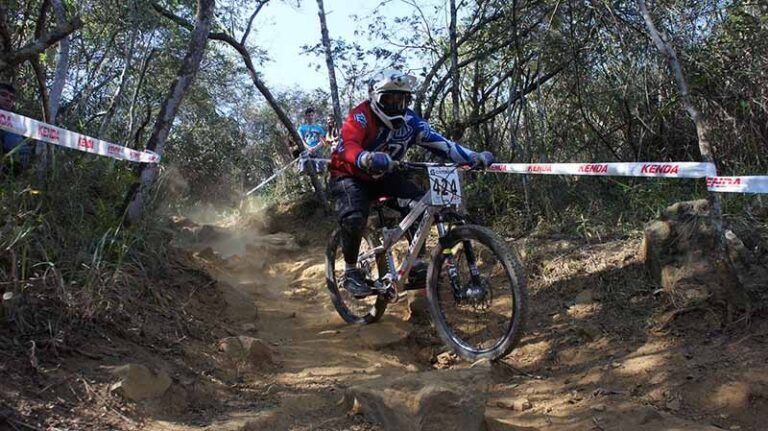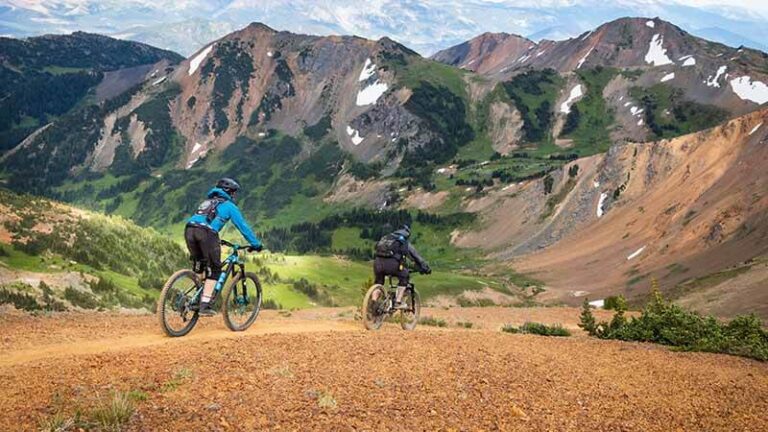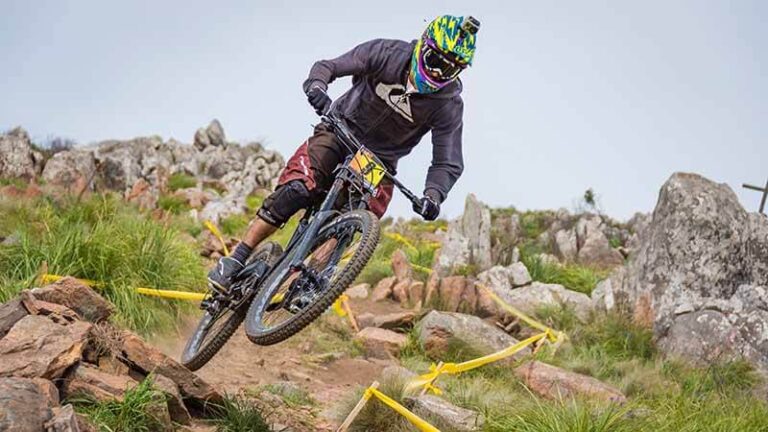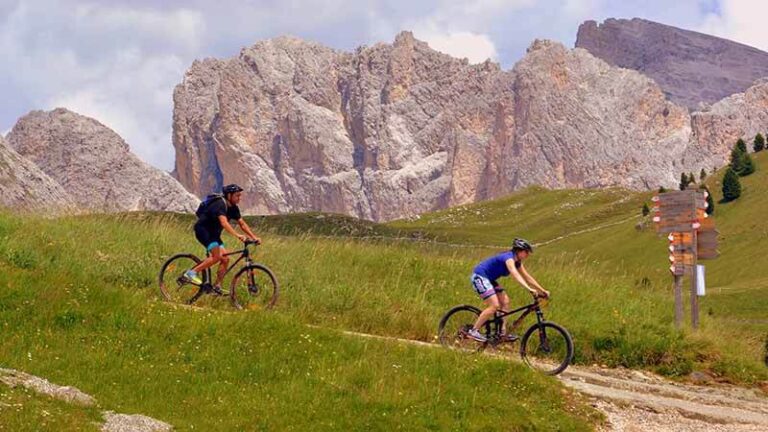What to Carry When Mountain Biking?
Mountain biking is a thrilling outdoor pastime that needs skill, fitness, and the proper equipment. Having the proper equipment is one of the most important parts of a good mountain riding adventure. This blog post will go through what gear and equipment are needed for a mountain bike excursion.
Mountain riding may be tough and unpredictable, so being prepared and carrying the proper equipment is essential. Mishaps like flat tires, mechanical problems, or falls can happen, and having the right equipment can make all the difference in coping with them. Furthermore, having the correct gear can assist avoid minor concerns from becoming significant issues, eventually ensuring the rider’s safety and comfort. As a result, being well-equipped and prepared for each possible eventuality is critical for a successful and fun mountain bike adventure.
Essential Gear
Several pieces of equipment are required for the rider’s safety, comfort, and overall experience when going on a mountain biking journey. Here are the fundamental mountain biking gear components that every rider should have;
- Helmet: The most important piece of equipment that any mountain biker should wear is a well-fitting, robust helmet. It protects the rider’s head in the event of an accident or a fall.
- Water bottle/hydration pack: Staying hydrated when participating in physical exercise is critical. Mountain bikers should bring a water bottle or hydration pack with them to ensure they have enough water to consume throughout their trip.
- Maintenance kit (tire pump, spare tube, multi-tool): During a ride, mechanical concerns such as flat tires or loose bolts may develop. Having a repair kit containing important tools such as a tire pump, spare tube, and multi-tool can assist riders in swiftly and easily repairing such problems.
- First-aid kit: Mountain riding can be dangerous, and accidents can occur. A basic first aid bag with things such as bandages, gauze, and disinfectant can assist riders in dealing with minor injuries before seeking medical attention.
- Navigation equipment (map, compass, or GPS): Mountain biking frequently takes riders through an unknown country, and navigation aids such as a map, compass, or GPS can assist riders in staying on track and locating their starting point.
Mountain cyclists may assure their safety, comfort, and preparedness for any unforeseen scenarios that may arise during their trip by carrying these critical gear items.
Clothing and Protection
Mountain cyclists should wear clothing and protection that provides comfort, safety, and protection against various elements. Here are some necessary mountain bike clothes and protection items to wear;
- Comfortable, moisture-wicking clothes: Because mountain biking is a sweaty activity, wearing clothing that is both moisture-wicking and breathable is vital for keeping the rider comfortable throughout the ride. Moisture-wicking shorts, shirts, and socks are examples of such goods.
- Padded shorts and gloves: Chamois-lined padded shorts can provide extra padding and avoid chafing during extended rides. Padded gloves can also reduce hand fatigue and absorb stress.
- Protective eyewear: During mountain biking, dust, dirt, and other debris can fly into a rider’s eyes, therefore wearing protective eyewear such as goggles or sunglasses can help prevent eye injuries.
- Knee and elbow pads: These pieces of protective equipment can help prevent injuries during falls and crashes, especially when riding on tricky terrain.
- Cold weather arm and leg warmers: In colder weather, arm and leg warmers can assist keep riders warm and comfortable while yet allowing for flexibility and movement.
Overall, adequate mountain bike clothes and protection are required to ensure safety, comfort, and enjoyment throughout the ride. Mountain bikers should select clothing and safety items based on weather, terrain, and personal preferences.
Nutrition and Hydration
Mountain cyclists require proper diet and hydration to sustain energy levels, stay hydrated, and avoid dehydration during their rides. These are some nutrition and hydration essentials that any mountain rider should consider bringing;
- Snacks: Mountain biking is a physically hard sport, and cyclists can burn a lot of calories while riding. Snacks like energy bars, fruit, or trail mix can assist refill energy levels and give the fuel needed for longer rides.
- Electrolyte drink mix: Sweating during a ride can induce electrolyte loss, which can lead to cramping, exhaustion, and other problems. Carrying an electrolyte drink mix with you can assist in replacing electrolytes and avoid such problems.
- Water filter or purification tablets for longer rides: It may not be possible to carry enough water for the entire ride on longer rides. Carrying a water filter or purification tablets can assist cyclists in purifying water from natural sources, ensuring that they have safe drinking water throughout their trip.
A successful and pleasurable mountain biking experience requires proper nutrition and hydration. Mountain cyclists should prepare ahead of time by bringing snacks, beverages, and purification methods suited for the length and complexity of the trip. Staying hydrated and fueled throughout the ride can assist riders in maintaining energy levels, avoiding dehydration and other health issues, and ultimately improving their entire experience.
Extra Gear
In addition to the essentials, mountain bikers may find it beneficial to carry the following goods, depending on the journey and conditions. Here are some other things to think about;
- Wear extra layers: The weather can change quickly, and temperatures might plummet as riders climb to higher heights. Carrying extra layers, such as a windbreaker, rain jacket, or warm hat, can assist cyclists in being comfortable and warm during their ride.
- Sunscreen and bug spray: During a ride, it is critical to protect the skin from the sun’s harmful rays and mosquitoes. Carrying sunscreen and insect repellent can help to prevent sunburn and insect bites, making the trip more comfortable and enjoyable.
- Bike lock: It is critical to keep the bike locked when making pit stops during the trip. While riders are not riding their bikes, a bike lock can assist prevent theft and give them peace of mind.
- Emergency blanket and whistle: Having an emergency blanket and whistle on hand can save your life in an emergency. Emergency blankets are intended to keep the body warm, whilst whistles can help draw attention and notify others in the event of an accident or injury.
Bringing extra equipment can help cyclists be prepared for any unanticipated events that may emerge during their trip. It’s crucial to examine the journey’s circumstances, topography, and length to determine which additional equipment to carry to ensure a safe and comfortable ride.
Packing Tips
Packing and organizing gear correctly is essential for a successful and fun mountain biking adventure. Here are some packing and organization tips for riders;
- Employ a compartmentalized backpack or bike bag: Having a compartmentalized backpack or bike bag can assist keep things organized and prevent them from shifting during the ride. This can aid motorcyclists in maintaining their balance and stability while riding.
- Pack heavy objects closer to your back: It’s critical to distribute weight equally while packing in order to preserve balance and stability on the bike. Heavy things, such as tools or water, should be placed closer to the back to provide correct weight distribution and to keep the backpack from pulling away from the rider’s back.
- Keep regularly used items conveniently available: Having frequently used items, such as water bottles or snacks, easily accessible will save riders the hassle of having to stop and look for them while riding. Keeping these goods in pockets or on the top of the backpack allows riders to easily access them when needed.
- Prepare for the terrain and length of the ride: When packing and organizing their kit, riders should consider the terrain and length of the trip. For example, more snacks and drinks may be required for a longer ride, whereas equipment for bike repairs may be more needed for a shorter, more challenging trip.
Packing and arranging gear properly can assist ensure a safe and pleasant ride, allowing riders to concentrate on the trail ahead. Riders may pack their kit more efficiently, maintain balance and stability on the bike, and keep vital goods conveniently available by following these guidelines.
Conclusion
To summarize, preparing and carrying the proper equipment is critical for a safe and pleasurable mountain biking ride. The essential gear, clothing, nutrition and hydration, and other items discussed in this article can assist riders to be prepared for a variety of terrain conditions and scenarios. Packing and organizing gear neatly can aid in maintaining balance and stability on the bike, as well as avoiding the inconvenience of having to stop and seek for stuff while riding.
It is critical to realize that the equipment and supplies required by cyclists will vary depending on the terrain, length of the trip, and weather conditions. Riders can ensure they have everything they need to stay safe, comfortable, and focused on the route ahead by analyzing the ride and preparing accordingly.
Taking the time to plan and carry the correct gear can help make the trip a success, whether riders are going for a casual ride around the local trails or starting on a long-distance excursion. Riders may enjoy the beauty and excitement of mountain biking while remaining safe and comfortable on the path by being prepared and carrying the appropriate gear.
Read More;

